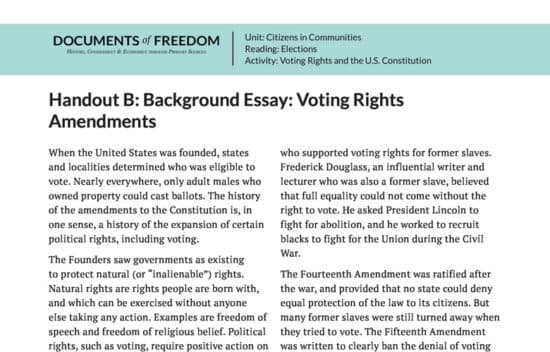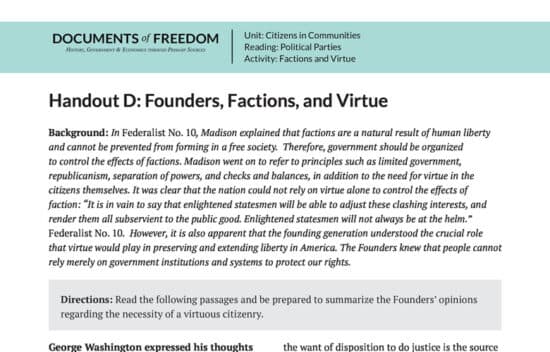



LADOE High School Civics | Unit 5: Elections and Politics
28 items

Electing a President
Lesson - 5 Activities
Lesson
5 Activities
90 Min
How do the components of the U.S. presidential electoral process function and rely on active political participation by citizens?
90 Min

Voting
Lesson - 4 Activities
Lesson
4 Activities
60 Min
America holds more elections than any other democracy. The reason is federalism. Because of decentralization there are more offices for the electorate to fill and thus more elections.
60 Min

Voting Rights and the U.S. Constitution
E Lesson
E Lesson
20 Min
As we approach this mid-term election, it’s important for students to keep in mind the responsibility they have as citizens to be informed and -- if they are old enough -- to vote for the candidate that they believe will best work on their behalf toward ensuring the common good. Elections can be a divisive time, but they are also a time where we come together to celebrate the beauty of democracy and to express our opinions through the vote. Voting is an expression of individual liberty and ought to happen freely, without coercion or intimidation. Sadly that has not always been the case in the United States. This lesson walks students through how individual liberty has been more fully realized through the expansion of the franchise.
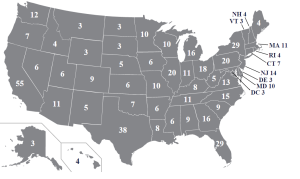
Electoral College
Resource
Resource
The Electoral College is the system used by the United States to elect its lead executive. The College is outlined in Article II, Section 1 and in the Twelfth and Twenty-Third Amendments to the United States Constitution.
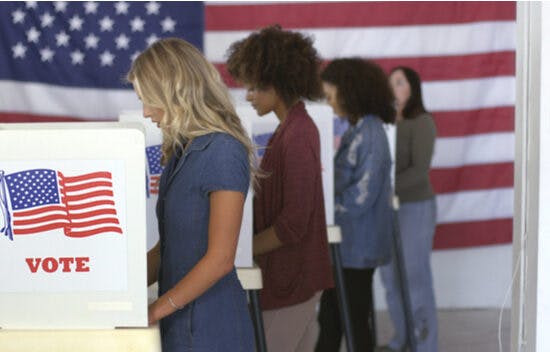
Appraising the Electoral College
E Lesson
E Lesson
20 Min
How does the Electoral College work and why did the framers decide this was the best way to elect the country’s chief executive? This lesson explores these fundamental questions and asks students to debate pros and cons of keeping the Electoral College.

Gerrymandering, Representation, and the Consent of the Governed
E Lesson
E Lesson
45 Min
Does gerrymandering support the concept of representation and consent of the governed?

Baker v. Carr | Homework Help from the Bill of Rights
Video
Video
5 Min
In this Homework Help video, learn the story of the landmark Supreme Court case of Baker v. Carr. The case explores the question of a state’s right to control electoral lines otherwise known as gerrymandering.
The case ruling concluded that the Supreme Court could hear cases pertaining to redistricting because of the Equal Protection Clause in the 14th Amendment through the process of incorporation which argues that states must adhere to the protections of guaranteed in the Bill of Rights. How did the ruling in this case contribute to the democratic principle of “one person-one vote”?
5 Min
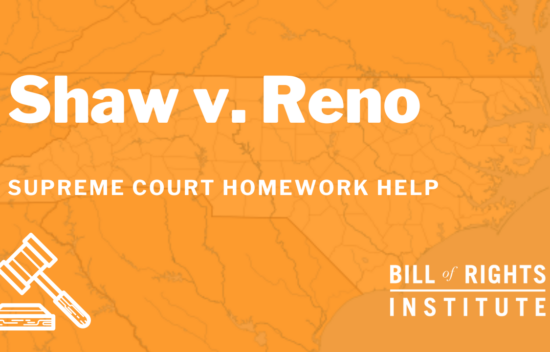
Shaw v. Reno | BRI’s Homework Help Series
Video
Video
5 Min
Can a state draw district lines to increase the voting power of a minority? The Supreme Court took up this question in the 1993 case of Shaw v. Reno. Following the 1962 Baker v. Carr Supreme Court case, which ruled that the Supreme Court could hear cases on gerrymandering because of the Equal Protection Clause in the 14th Amendment through the process of incorporation, Shaw v. Reno challenged the constitutionality of gerrymandering based on race. Check out our latest Homework Help video on this AP Government required Supreme Court case!
5 Min

Elbridge Gerry (1744-1814)
Lesson - 3 Activities
Lesson
3 Activities
45 Min
What was Elbridge Gerry's role as a leader in the American opposition to British tyranny? Why did he oppose the Constitution? And why does his legacy include the tactic of gerrymandering?
45 Min

Political Parties
Lesson - 4 Activities
Lesson
4 Activities
From the Founding to the present, Americans have always expressed a distrust of political parties. Hardly a day passes without someone’s—the president, a Senator, a Representative—attacking politics in Washington for the spirit of partisanship.
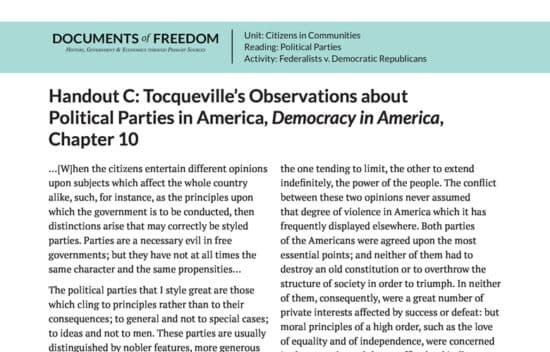
Handout C: Tocqueville’s Observations about Political Parties in America, Democracy in American, Chapter 10
Activity
Activity

Freedom of Speech: Campaign Finance
Resource
Resource
Where does the right to free speech intersect with elections? Find out how the court ruled on this important constitutional question in these cases.

Campaign Finance: PACs and SuperPACs
Lesson - 4 Activities
Lesson
4 Activities
45 Min
How do PACS and super PACs aid in financing political campaigns?
45 Min

Presidency, Populism, & the Decline of Parties w/ Sidney Milkis | BRI Scholar Talks
Video
Video
28 Min
How did the presidency, populism, and the decline of parties lead to the collapse of the moderate “vital center” for greater polarization? In this episode of Scholar Talks, Dr. Sidney Milkis, the White Burkett Miller Professor in the Department of Politics and Faculty Fellow at the Miller Center, joins BRI Fellow, Tony Williams, to discuss his book “What Happened to the Vital Center?: Presidentialism, Populist Revolt, and the Fracturing of America.” They converse about how recent presidents and the transformation of liberalism and conservatism have contributed to the growing partisanship in American politics.
28 Min

Interest Groups at Work
Lesson - 2 Activities
Lesson
2 Activities
90 Min
How well do interest groups represent the voices, concerns, and needs of citizens while working to connect the people and the government?
90 Min

Citizens United v. F.E.C. (2010)
Lesson - 5 Activities
Lesson
5 Activities
Case background and primary source documents concerning the Supreme Court case of Citizens United v. F.E.C. Dealing with free speech in the political arena, this lesson asks students to asses whether or not the Supreme Court ruled correctly in Citizens United in light of constitutional principles including republican government, freedom of speech, and property rights.

How Officials Use the Media
Lesson - 1 Activities
Lesson
1 Activities
45 Min
How does the use of media help or hinder government officials’ communication with the public?
45 Min

Media as a Watchdog
Lesson - 1 Activities
Lesson
1 Activities
45 Min
What significant role(s) does the media play in democracy?
45 Min

How the Media Presents Information
Lesson - 2 Activities
Lesson
2 Activities
45 Min
How have various forms of media provided citizens with political information and influenced the ways in which people participate politically?
45 Min

Freedom of Speech: Campaign Finance
E Lesson
E Lesson
20 Min
This eLesson features Supreme Court cases that impacted freedom of speech in campaign finance, including a link to Oyez to learn more.

Understanding the Nomination Process
E Lesson
E Lesson
20 Min
The Founding Fathers created a republic, “a government which derives all its powers directly or indirectly from the great body of the people.” Because they were concerned that presidential elections would become occasions for “tumult and disorder,” they agreed upon a system for electing presidents indirectly. The original electoral process established in Article II included the Electoral College and a complicated set of rules by which these electors cast their votes.

Voting Rights in America
E Lesson
E Lesson
20 Min
A vote is the best way of getting the kind of country and the kind of world you want. –HARRY S. TRUMAN The history of the amendments to the Constitution is, in one sense, a history of the expansion of certain political freedoms, including voting. At the Founding of the United States, many groups, including landless white men, slaves, free blacks, and women, could not vote.

Voters Make History with State Ballot Initiatives
E Lesson
E Lesson
20 Min
We’ll forgive you if you thought the recent election was only about the president. While the media focus was almost exclusively on the presidential race and national politics, there was a lot going on at the state level.

Debating Voter ID Laws
E Lesson
E Lesson
20 Min
Should voters need to verify their ID before casting a ballot? Explore the debate with this lesson.

Louisiana’s Congressional Districts
Lesson
Lesson
60 Min
How do congressional districts in Louisiana impact representation and elections?
